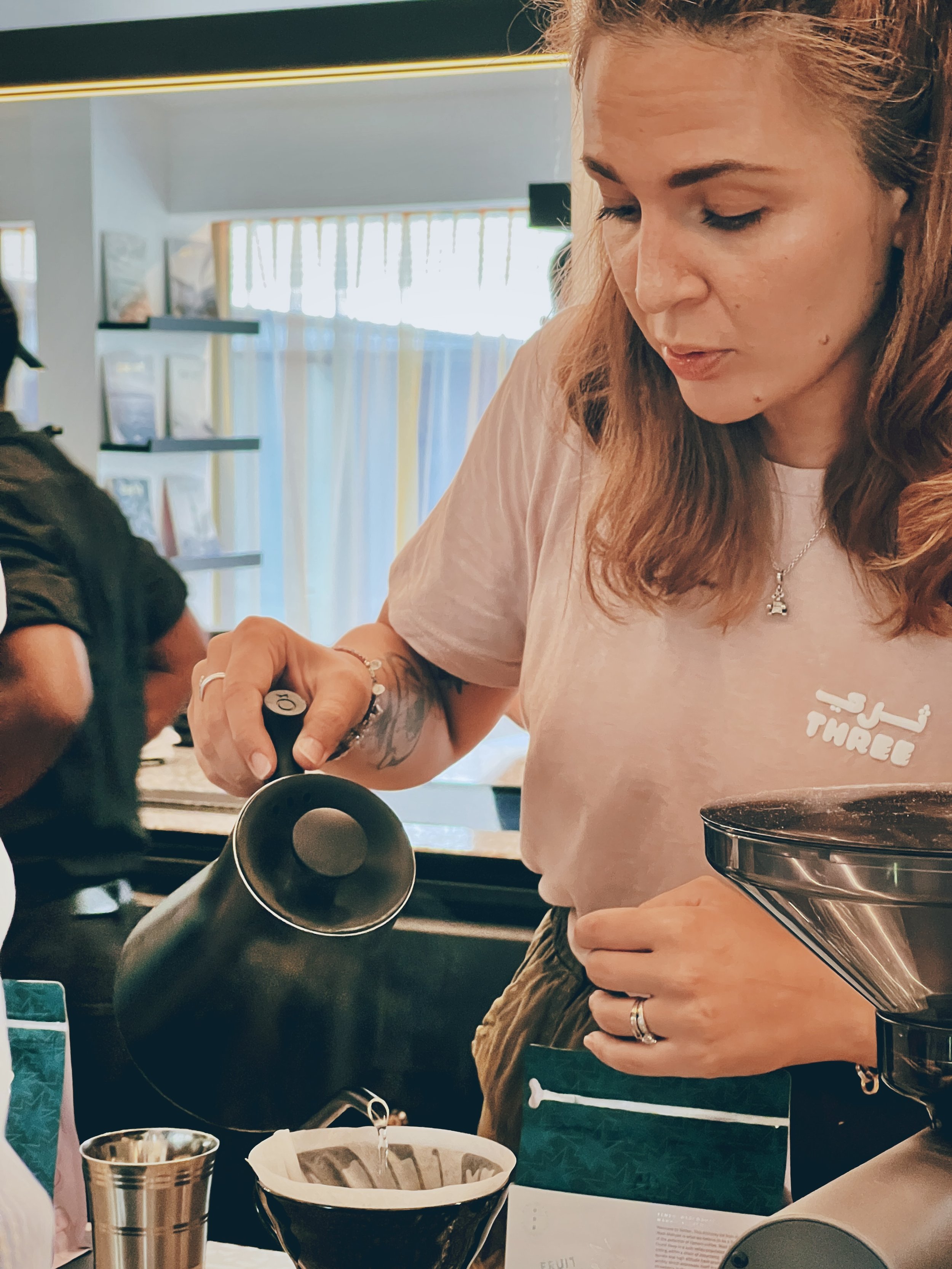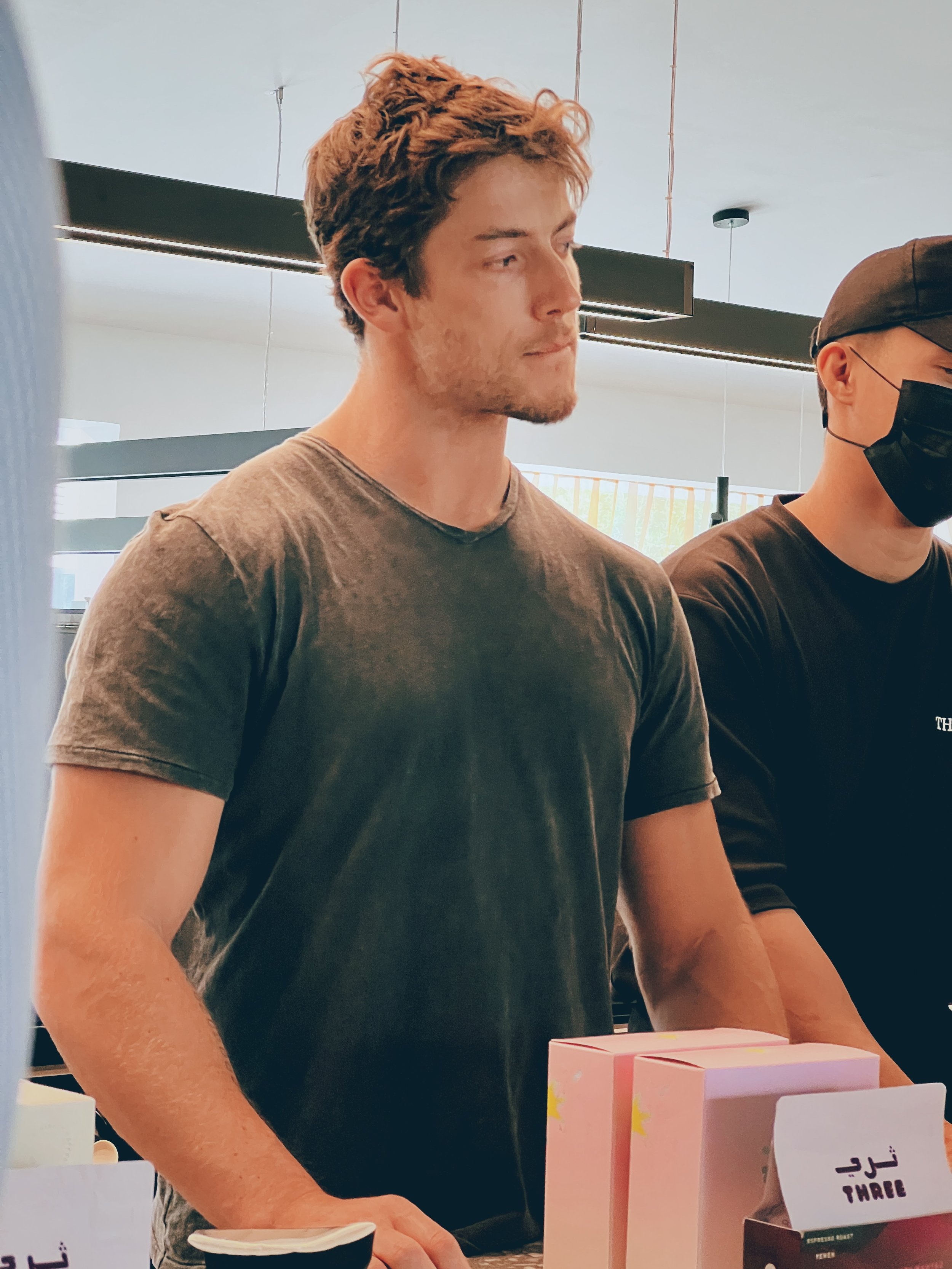The how, where and what of coffee
My specialty coffee journey officially started a few years ago when I had won the London Dairy Coffee Master Class. I have two people to thank, Karthik and Drew. Since then, I have consumed gallons of coffee compared to a measly few liters. So, when The Grey invited me for an event named the How, Where and What of Coffee in collaboration with Three Coffee, it was reminiscent of the start of my specialty coffee journey.
The Grey on many occasions has been a really good meeting point for me to get together with friends, colleagues and clients. The gathering always ends on a good note complimenting the cafe with words like modern, chic and classy. The aesthetics of the cafe and the filter coffee selection here adds to the experience. My favorite is the La Rosa 313, more on that later.
Three Coffee featured three coffees from three different origins, and spoiler alert, all of them were really good. Two of them were Geishas and one Yemenia. If you know Three Coffee, you will know that they do things differently. Their coffees are literally fruit bombs. The first was a Colombia Geisha which I dont have much information on. This one is for the citrus lovers. As Gardelli likes to say, acidity is not a crime.
Second, the Panama Geisha La Rosa 313; this coffee has undergone anaerobic fermentation in a sealed tank for two days, depulped and shade-dried close to two weeks, followed by drying in the sun to reach the target moisture content. The Geisha is then rested and cured for four long months to achieve the desired complex fruity characteristics that this variety is well known for.
Last one got me all excited when I read "Alchemy" plastered on the front of the coffee bag. Almost all of the Yemenis I have had till date have undergone tradition natural processing. However, there are outliers and the Al Bait Alchemy by QIMA Coffee does not disappoint. This coffee has undergone a double anaerobic fermentation producing unique notes of Turkish delight, berries and stone fruits.
Uliana was ready to wow us at the pour over station. She began by explaining the varieties of the coffee placed in front of her. Three origins and two different varieties, but no similarities whatsoever in the final cup. It all boils down to different growing conditions, terroir, processing etc. She craftfully brewed three coffees simultaneously while explaining the varietals in depth.
Uliana has competed a couple of times on the big stage and I understood why this multitasking phenomena happening in front of us came off as a natural and easygoing task for her. The exceptional presentation was the result of her rehearsing numerous times for the competition.
What stood out for me on the V60 was the Yemenia for it's heavy body, almost non-existent acidity, berries and winey notes showing that it has undergone a lot more fermentation than the other two. I do enjoy a good experimental once in a while, but when it comes to filter, I find myself defaulting back to a complex-light bodied coffee. I'm referring to the Panama for it's contrasting light body and unique floral aromatics.
We then moved to the second station which Drew was the captain of. The same coffee was now prepared in espresso, and let me be honest, I was not prepared. I don't understand the intricacies of an espresso, so I am not going to comment much here. But, my friend Lameen aka From Coffee With Love who was also present, touted the Yemenia for its unique taste profile on the espresso.
Add milk to espressos and there's a radical change in the coffee. The intensity was now muted, with only a hint of florality and caramel notes. Yes, that was a lot of caffeine consumption, but I’d like to think that it was for a good cause - education. I took home with me the knowledge and experience of how important it is to be present and analyze the coffee you are sipping. That is the only way you will understand what you are drinking and why it tastes the way it does.












